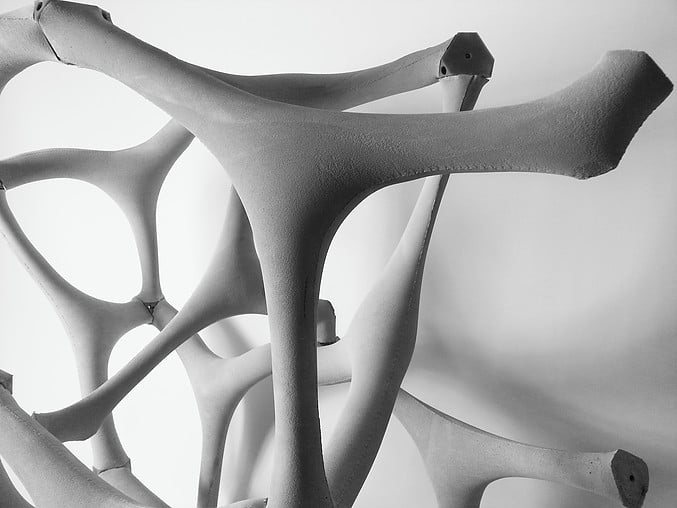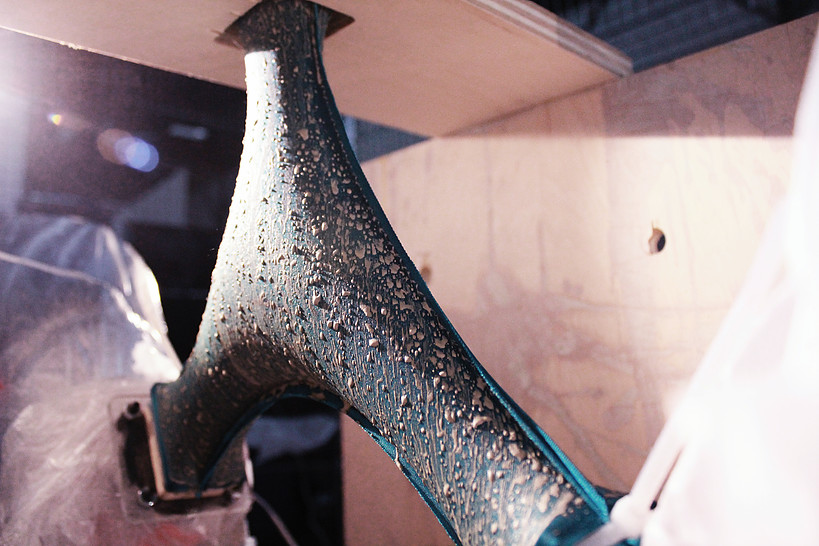
As conventional casting methods have taught us, the best way for reliably manufacturing multiples of any object is to start with an accurate and sturdy mold.
For their recent Fabric Forms explorative material study, however, architects Joseph Sarafian and Ron Culver wanted to do something that was anything but conventional.
Working with the Grasshopper plug-in for Rhino and a pair of 6-axis Kuka robots, the designers developed a new method of manufacturing that couples the precision of 6-axis robots with the flexibility of fabric – a combination that can rapidly produce variation in cast objects.

Using the durable Lycra fabric as their flexible mold material of choice, Sarafian and Culver developed concrete structural prototypes that, despite their organic variation, are able to be built along with accurately positioned geometries. These ‘contact points’ between each of the modular structural forms are controlled by the 6-axis robots while the fabric stretched between the arms is able to move freely at will and provide the variation for each part. Once cast, the pieces are connected using custom 3D printed nodes and bolts built specifically for the project:
Read more at SolidSmack.com

